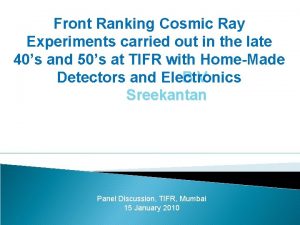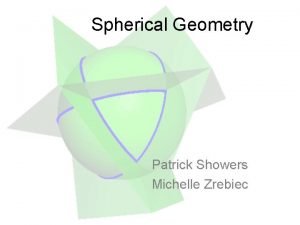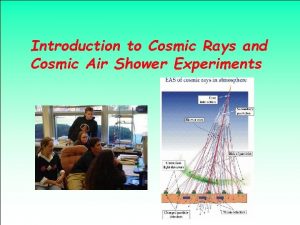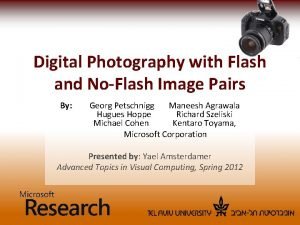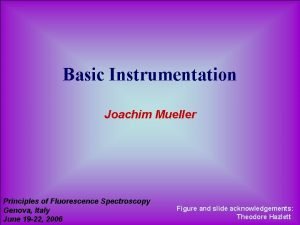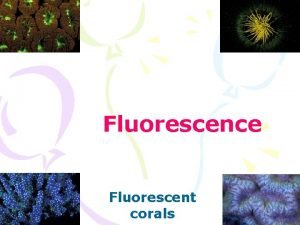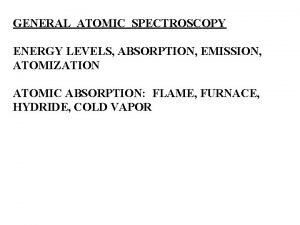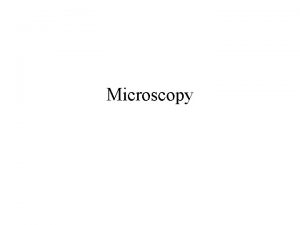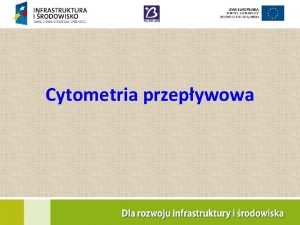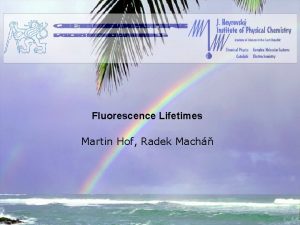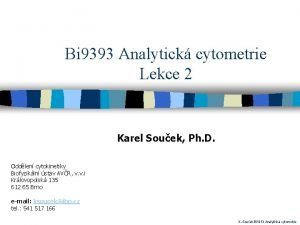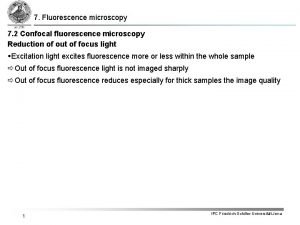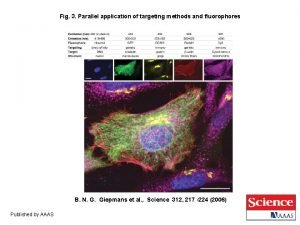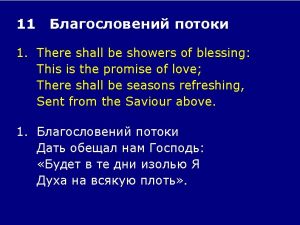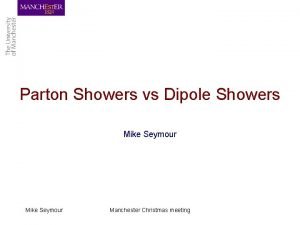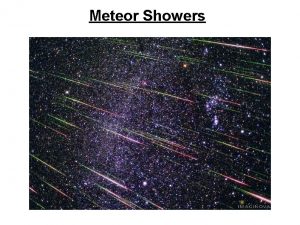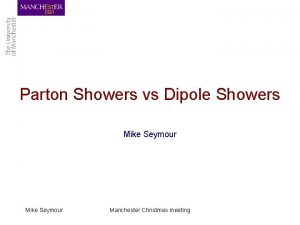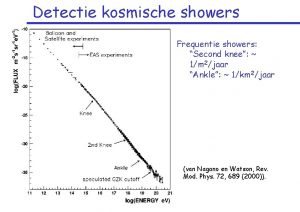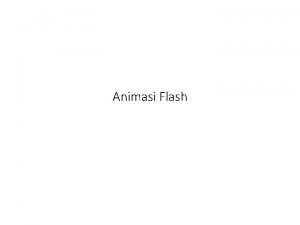Proposal E165 Fluorescence from Air in Showers FLASH















- Slides: 15

Proposal E-165 Fluorescence from Air in Showers (FLASH) J. Belz 1, Z. Cao 2, P. Chen 3*, C. Field 3, P. Huentemeyer 2, W-Y. P. Hwang 4, R. Iverson 3, C. C. H. Jui 2, T. Kamae 3, G. -L. Lin 4, E. C. Loh 2, K. Martens 2, J. N. Matthews 2, W. R. Nelson 3, J. S. T. Ng 3, A. Odian 3, K. Reil 3, J. D. Smith 2, P. Sokolsky 2*, R. W. Springer 2, S. B. Thomas 2, G. B. Thomson 5, D. Walz 3 1 University of Montana, Missoula, Montana 2 University of Utah, Salt Lake City, Utah 3 Stanford Linear Accelerator Center, Stanford University, CA 4 Center for Cosmology and Particle Astrophysics (Cos. PA), Taiwan 5 Rutgers University, Piscataway, New Jersey * Collaboration Spokespersons

• Cosmic Rays have been observed with energies at up to ~1020 e. V: • The flux (events per unit area per unit time) follows roughly a power law ~E-3 • Changes of power-law index at “knee” and “ankle”. Onset of different origins/compositions? Where does the spectrum stop?

Discrepancy Between Two UHECR Experiments AGASA Hi. Res

UHECR From Source to Detector CMB γ

Greisen-Kuzmin-Zatsepin (GZK) Cut-off 3× 1020 e. V 50 Mpc ~ Size of local cluster (protons) • Protons above 6× 1019 e. V will loose sizable energy through CMB • Super-GZK events have been found with no identifiable local sources

Extensive Air Showers Zoom on next slide

Extensive Air Shower Development êHadronic shower initiated by primary êElectromagnetic Shower produced by γ’s from p 0 decays…


Observation of Cosmic Ray with Fluorescence Technique • The two detector sites are located 12 km apart • Geometry of an air shower is determined by triangulation. • Energy of primary cosmic ray calculated from amount of light collected.


Other Proposed Fluorescence Experiments • Carlos Escobar (Campinas, Italy) • Andrea Santangelo (Palermo, Italy) - Lab. measurements induced by hard-x-ray photons • Paolo Privitera (Rome, Italy) - similar approach to Kakimoto and Nagano • Hans Klages (Karlsruhe, Germany) - Karlsruhe activities on Air Shower Light • Pierre Colin (LAPP, France) - Mac. FLY Photons • Philippe Gorodetzky (College de France) - Measurements planned at CERN

UNIQUE LABORATORY ASTROPHYSICS OPPORTUNITY • High intensity e-/e+ beams ultra-fast (< 50 fsec), high energy (~30 Ge. V/e) ultra-high intensity (~ 1022 W/cm 2) very high repetition rate (10 Hz) • High fluence photon beams 1. X-ray from undulator (~ 109 γ/pulse at 1. 5 Å) 2. Terawatt laser (at ~ 1 μm) 3. Gamma-ray (up to ~ 15 Ge. V) through laser-particle beam Comptonbackscattering * Experiments can be performed with different combinations of these beams

MEASURING FLUORESCENCE AT SLAC • Extensive Air Showers (EAS) are predominantly a superposition of EM subshowers. • Important N 2 transition (2 P) not accessible by proton excitation; only e-beam can do it. • FFTB beam-line provides energy equivalent showers from ~1015 to ~1020 e. V. – 108 -1010 electrons/pulse at 28. 5 Ge. V. – 2% of electron pulse bremsstrahlung option.

FLASH useful for future UHECR Experiments Ground-Based: The Pierre Auger Observatory • Hybrid detection • 1600 Cherenkov detectors 1. 5 km grid in 3000 km 2 • 4 fluorescence eyes – Comparable to Hi. Res 65 km

èSpace-Based: EUSO, OWL/Air. Watch
 Gm counter
Gm counter Clil showers
Clil showers When in april the sweet showers fall
When in april the sweet showers fall Patrick showers
Patrick showers Cosmic air flights
Cosmic air flights Digital photography with flash and no-flash image pairs
Digital photography with flash and no-flash image pairs Pt tanah air sentosa
Pt tanah air sentosa Principle of fluorescence spectroscopy
Principle of fluorescence spectroscopy Jablonski
Jablonski Cold vapor atomic fluorescence spectrometry
Cold vapor atomic fluorescence spectrometry Microscipe
Microscipe Fluorescence-activated cell sorting (facs)
Fluorescence-activated cell sorting (facs) Internal conversion in jablonski diagram
Internal conversion in jablonski diagram Fluorescence bandpass filter
Fluorescence bandpass filter Confocal fluorescence microscopy
Confocal fluorescence microscopy Fluorescence recovery after photobleaching
Fluorescence recovery after photobleaching
